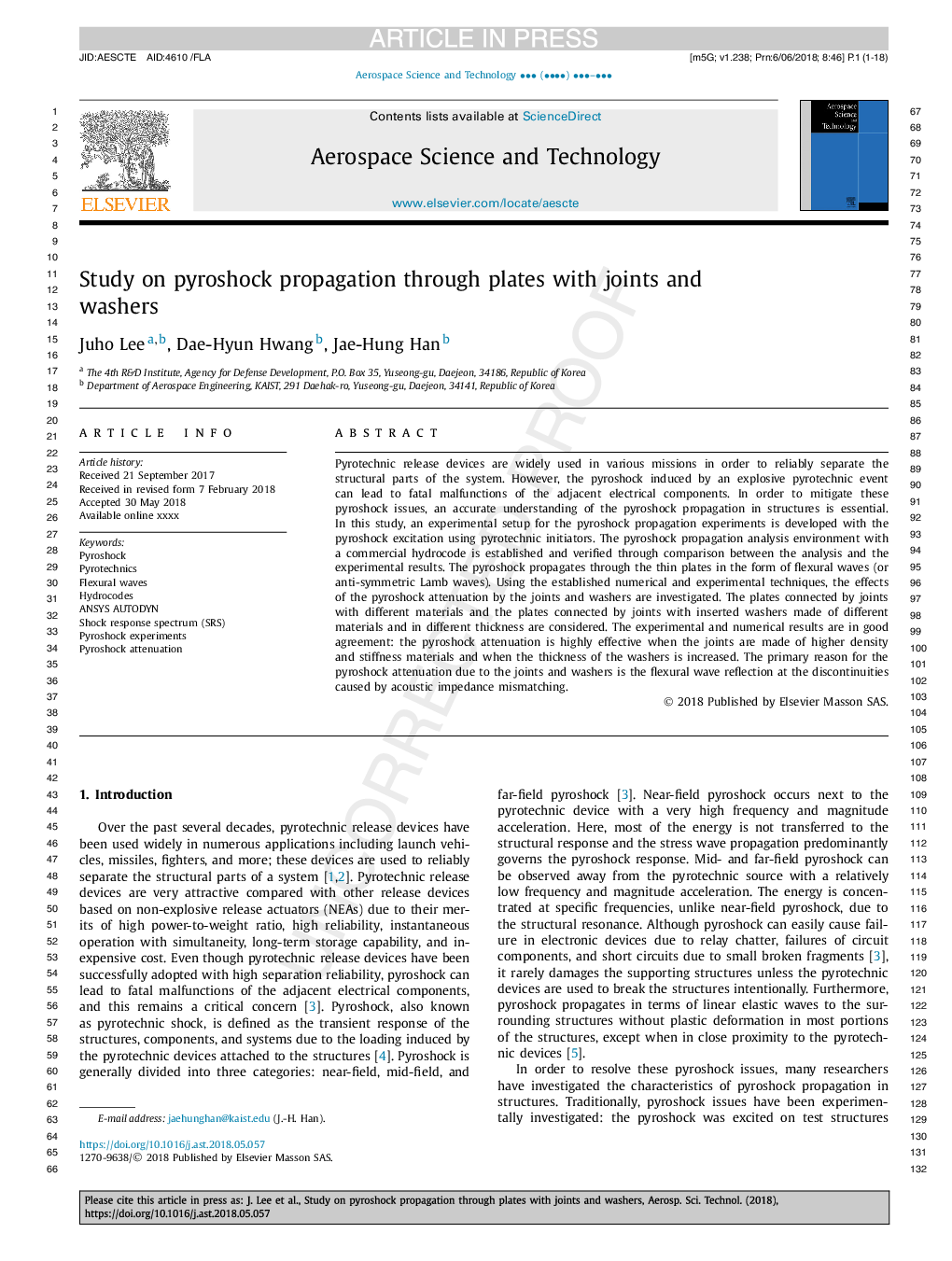| Article ID | Journal | Published Year | Pages | File Type |
|---|---|---|---|---|
| 8057404 | Aerospace Science and Technology | 2018 | 18 Pages |
Abstract
Pyrotechnic release devices are widely used in various missions in order to reliably separate the structural parts of the system. However, the pyroshock induced by an explosive pyrotechnic event can lead to fatal malfunctions of the adjacent electrical components. In order to mitigate these pyroshock issues, an accurate understanding of the pyroshock propagation in structures is essential. In this study, an experimental setup for the pyroshock propagation experiments is developed with the pyroshock excitation using pyrotechnic initiators. The pyroshock propagation analysis environment with a commercial hydrocode is established and verified through comparison between the analysis and the experimental results. The pyroshock propagates through the thin plates in the form of flexural waves (or anti-symmetric Lamb waves). Using the established numerical and experimental techniques, the effects of the pyroshock attenuation by the joints and washers are investigated. The plates connected by joints with different materials and the plates connected by joints with inserted washers made of different materials and in different thickness are considered. The experimental and numerical results are in good agreement: the pyroshock attenuation is highly effective when the joints are made of higher density and stiffness materials and when the thickness of the washers is increased. The primary reason for the pyroshock attenuation due to the joints and washers is the flexural wave reflection at the discontinuities caused by acoustic impedance mismatching.
Keywords
Related Topics
Physical Sciences and Engineering
Engineering
Aerospace Engineering
Authors
Juho Lee, Dae-Hyun Hwang, Jae-Hung Han,
